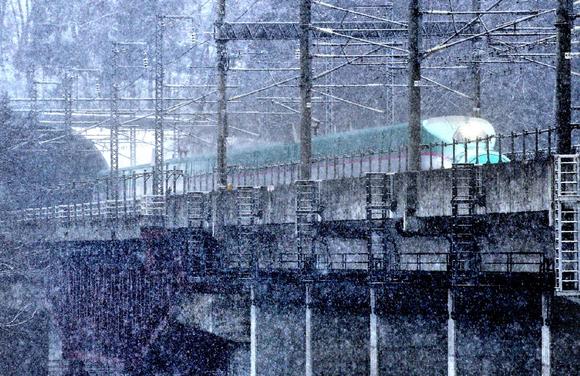NIKKEI – February 18, 2016 – TOKYO — East Japan Railway will invest 1.04 trillion yen ($9.10 billion) to revamp two key bullet train lines starting in fiscal 2031, the company said Wednesday in highlighting a stronger focus on its shinkansen service.
The company, known as JR East, will repair aging bridges and tunnels as well as fortifying cliffs with cement to improve safety. The 778km project, slated to continue through 2040, marks the first comprehensive renovation since the routes opened in 1982. One route links Tokyo and the Iwate Prefecture city of Morioka, while the other connects Niigata Prefecture and Omiya in Saitama Prefecture.
The major spending plan underscores a growing focus on bullet train services, which generate an increasingly bigger chunk of JR East’s earnings.
For the current year ending in March, JR East is on track to post 8% growth in operating profit to a record 463 billion yen, with shinkansen operations contributing significantly. Bullet train fare income has jumped more than 30% in the past five years. A new line that opened in northwestern Japan in March 2015 has been a boost, and another line to open March 26 connecting the main island of Honshu with Hokkaido will add to earnings starting next fiscal year.
Local transit networks in greater Tokyo account for more than 60% of JR East’s transport income and traditionally have been the main earner. But their growth potential is limited with local populations seen shrinking over the medium to long term.
So the company is working to bolster the bullet train business. As JR East promotes tourism in northeastern Japan to domestic and foreign tourists alike, enhanced safety will be a selling point.
To alleviate the financial burden, JR East has submitted a funding plan to the Ministry of Land, Infrastructure, Transport and Tourism that involves a reserve fund eligible for tax deferral. If approved, JR East would set aside tens of billions of yen annually for 15 years starting in fiscal 2016 to save 360 billion yen. This channel would finance an average of 36 billion yen out of around 100 billion yen in annual spending.
Central Japan Railway is working on a 730 billion yen revamp of a shinkansen route connecting Tokyo and Osaka. JR East’s project will cost about 40% more because of the longer distances covered and the need for tougher resistance to snow and cold in the north.
The company will cultivate cost-saving technologies such as applying resin materials to the surface of concrete bridges, an official said.

